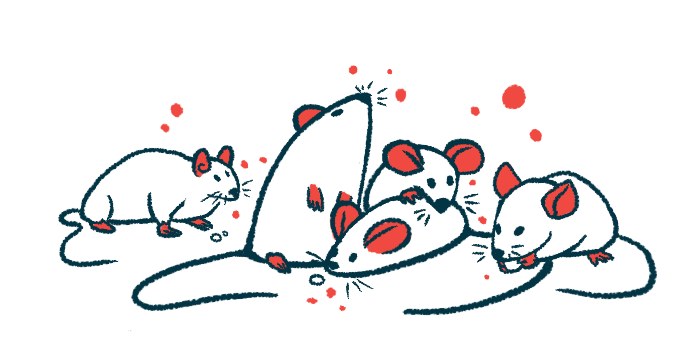C75 treatment may help reverse PAH processes, preclinical study finds
Study also identifies RNA molecules that could be potential biomarkers of PAH

Treatment with C75, an inhibitor of an enzyme called fatty acid synthase (FAS), partially reversed disease processes in a mouse model of pulmonary arterial hypertension (PAH), a study reports.
C75 benefits may be linked to changes in pathways involved in cell proliferation and inflammation, among other processes, “thus inhibition of FAS may serve as a potential means for reversing PAH,” scientists wrote.
In addition, they found RNA molecules that could be diagnostic and therapeutic biomarkers of PAH.
The study, “Comparative transcription profiling of mRNA and lncRNA in pulmonary arterial hypertension after C75 treatment,” was published in the journal BMC Pulmonary Medicine.
Inhibition of fatty acid synthase found to have protective effects against PAH
Despite the development of novel therapies for PAH, the prognosis for patients with the disease is often poor. Understanding the molecular mechanisms behind how the disease starts and progresses is key to developing new therapeutic strategies and treatments.
Prior research suggests that metabolic alterations are at the center of PAH. The levels of the fatty acid synthase, an enzyme responsible for the production of long-chain fatty acids, were found elevated in pulmonary artery smooth muscle cells and in lung tissues of PAH rat models. Moreover, the same study reports that inhibition of this enzyme exerted protective effects against PAH.
In the new study, researchers in China investigated RNA molecules called messenger RNA (mRNA) and long non-coding RNA (lncRNA) in a mouse model of PAH before and after treatment with C75.
Whereas mRNA is a molecule generated from DNA that serves as a template for protein production, lncRNA are not translated to functional proteins. Rather, they modulate protein-coding genes by interacting with proteins, DNA, and RNA.
To induce PAH, animals were injected with a chemical called monocrotaline (MCT) for five weeks or with a control solution. MCT-treated animals were then injected with C75 for an additional five weeks.
First, the researchers confirmed that MCT triggered the typical pulmonary artery remodeling (structural alterations) of PAH and a significantly higher right ventricular systolic pressure, a measure of the pressure inside the lower right heart chamber. This was lessened following treatment with C75.
Next, they analyzed how mRNAs and lncRNAs changed in the lungs of PAH mice (MCT alone), of those also given C75, and of controls. Results showed that compared to controls, the PAH group showed significant changes in 285 mRNAs and 147 lncRNAs.
After five weeks of C75 treatment, the levels of 514 mRNAs and 84 lncRNAs had changed when compared to the MCT-only group.
C75 treatment can partially reverse PAH, researchers suggest
Further analysis into the molecular pathways regulated by the mRNAs showed they were linked with the inflammatory response, with mRNA levels of the pro-inflammatory molecules TNF-alpha, interleukin (IL)-5, IL-6, and IL-13 being elevated in MCT animals. Treatment with C75 partially reduced the levels of TNF-alpha and IL-5, while it partially reversed the MCT-induced increase in FAS.
These findings suggest that inflammation “was activated in the PAH model, while C75 treatment can reverse” it partially, the researchers wrote.
The findings also showed that several mRNAs targeted by lncRNAs were found at different levels between the PAH model and animals given C75, and that these mRNAs were involved in the regulation of metabolism, protein secretion, and DNA repair, among other processes.
In lab tests, hypoxia (low oxygen levels) increased the proliferation of pulmonary artery smooth muscle cells. C75 treatment, given over 24 hours, reduced cell proliferation. Also, in agreement with its role in PAH, while the mRNA levels of FAS were increased by hypoxia, treatment with C75 inhibited this increase.
Finally, the researchers reduced the levels of a protein called MMP8, which plays a key role in PAH. Reducing the levels of MMP8 inhibited the hypoxia-induced proliferation and inflammation in pulmonary artery smooth muscle cells, as seen by a decrease in IL-6 and TNF-alpha levels.
Overall, the researchers identified “some dysregulated mRNAs and lncRNAs which may be potential drivers as well as diagnostic and therapeutic biomarkers of PAH.”
Also, “we propose that C75 treatment can partially reverse PAH pathogenesis [disease] through modulating cell cycle, cell proliferation, and anti-inflammatory [processes],” they concluded.









